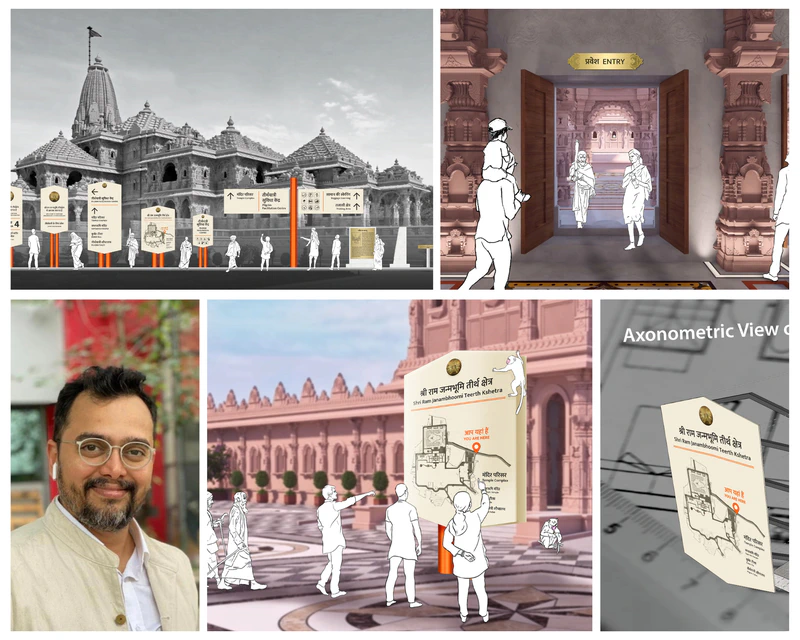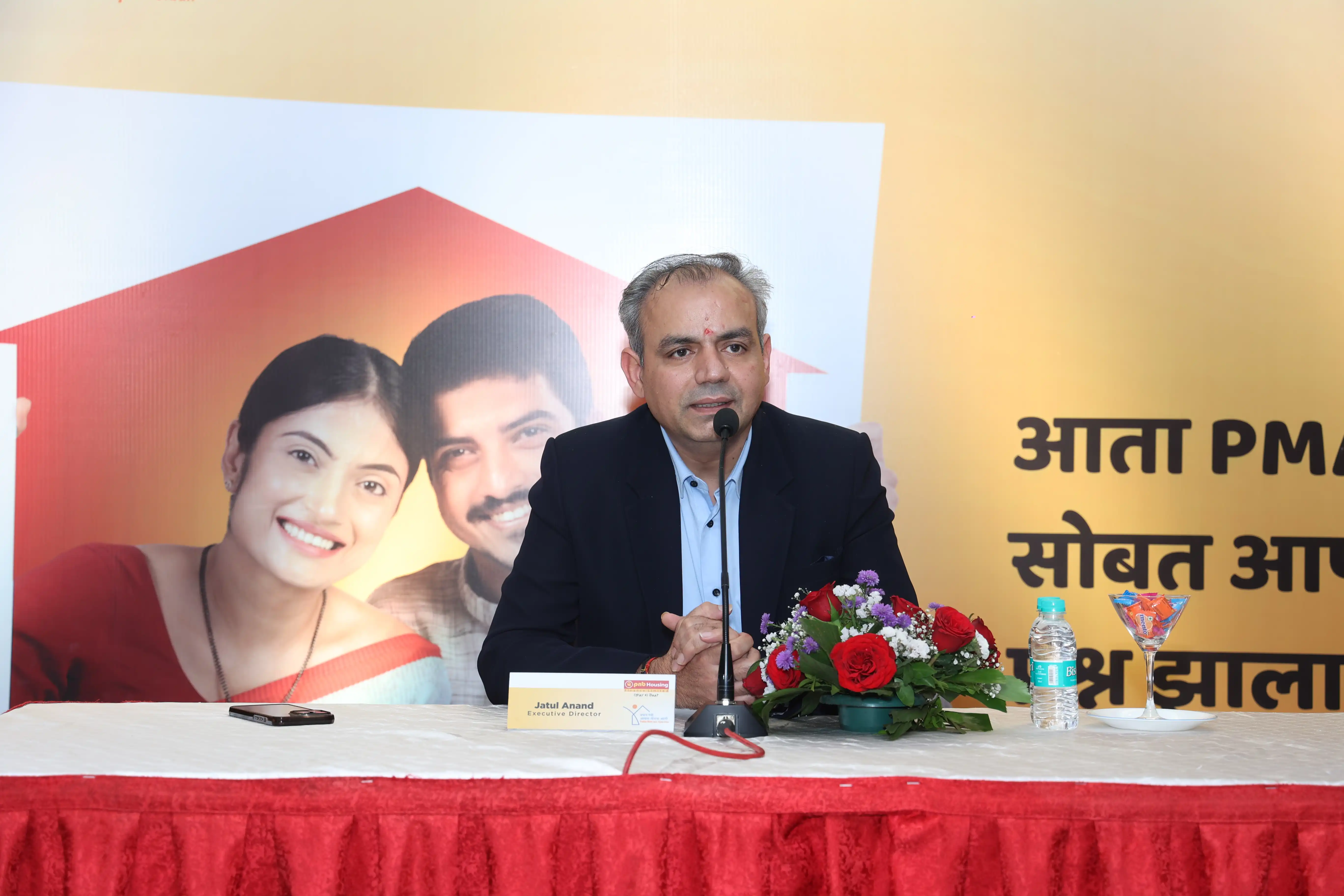The Shree Ram Temple in Ayodhya, Uttar Pradesh being developed by the Shree Ram Janma Bhoomi Teerth Kshetra is in full swing for its further construction. The first phase of the temple witnessed a magnificent inauguration at the hands of Prime Minister Narendra Modi in January. Being one of the major religious sites in the country, devotees have strong emotions attached to Ayodhya, resulting in a large number of people visiting the city to offer their prayers to Shree Ram. According to an estimate about 10 Cr devotees are expected to visit the Ram Temple complex at Ayodhya. Considering the same, the need to increase high-grade security is important. At such crucial times, the signage boards play a significant role. As this challenge came ahead, the designing of these signage boards was successfully fulfilled by Baarish Date from Maharashtra. He was speaking at a press conference held in Pune today. Dignitaries like Rugwed Deshpande and Nilesh Sule were also present on the occasion.
Baarish Date is an architect and holds a Master’s Degree in Design from the Industrial Design Centre of IIT, Mumbai. He has established ‘Graphics Beyond’, a firm headquartered in Goregaon, Mumbai that designs and implements the concepts of ‘Way Finding Signages’ for large-scale projects. Baarish has also worked on many projects in Pune, which primarily include projects like Magarpatta, Amanora, Lodha Belmondo, etc.

Elaborating on the concept of designing the ‘Way Finding Signages’ within the Shree Ram Temple complex in Ayodhya, Baarish Date said, “Devotees from all corners of the country, different states, with diverse dialects, varied cultures and walks of life visit Ayodhya to offer their prayers to Shree Ram. Along with this, devotees of Shree Ram from different countries will also visit Ayodhya. While considering all these aspects while developing the concept of ‘Way Finding Signages’ in the complex area, lots of emphasis was given as to which language should be used, the color combinations, and its sizes and shapes, eventually resulting in using suitable pictograms. The pictograms, i.e. pictorial depictions, were a better choice instead of using multiple languages. This step was taken to specifically ensure that the devotees are easily guided via pictures even if they don’t know the language.”
“This grand project, encompassing a total area of 22 acres, is currently being developed in an area of 2 acres through its first phase. The dimensions of the ‘Way Finding Signages’ which will be providing all the information about the available facilities here, will be 6 feet wide and 15 feet high. Additionally, these boards will be installed at a height of about 4 - 5 feet from the ground so that their view won’t be obstructed. These boards will carry appropriate information and suitable pictures in languages like Hindi and English and will be installed on two saffron-colored pipes. These pipes would be to highlight the significance of the two vertical lines used in the Vedas and Shlokas. A pink stone from Bansi Paharpur in Rajasthan has been used in the construction of the temple. Keeping this background in mind, suitable colors have been chosen to design panels that neither stand out of the temple’s background nor do they mix into the background,” said Date.

“Ayodhya has a lot of monkeys. People believe that they are Shree Ram’s devotees and security guards here. To value this sentiment, we have taken special care in designing the signboards to ensure that the monkeys are not harmed in any manner. Precautions have also been taken to ensure that the information on the signages is not damaged by these monkeys.”
“Depending on their location, the signages are manufactured using aluminum and stainless steel along with a portion of brass and a special material called Corian. Many of these plaques will have a special symbol indicating the importance of ‘Suryavansh’, which is also the emblem of the Shree Ram Janma Bhoomi Teerth Kshetra. In the next year, there will be about 250 ‘Way Finding and Informative Signages’ within the temple area, with 70 to 80 of them being indoor and others being outdoor boards.” added Date.

Keeping in mind the fact that Ayodhya is emerging as a spiritual tourism hub on the world map, the Ayodhya Development Authority (ADA), Government of Uttar Pradesh organized a competition for designing signage boards in 2022. In this competition, more than 400 designers from across the globe participated, while Baarish Date’s ‘Graphics Beyond’ bagged the first place with a cash prize of Rs1.5 lakh. The concept presented by ‘Graphics Beyond’ took the needs of the residents, the tourists, and the devotees who visit Ayodhya into consideration. After winning the competition, ‘Graphics Beyond’ was noticed by Champat Rai, Joint Secretary of Shree Ram Janma Bhoomi Teerth Kshetra. Leading to this, the responsibility to design the ‘Way Finding Signages’ within the Shree Ram Temple complex was handed over to Baarish Date to work in tandem with Shree Ram Janma Bhoomi Teerth Kshetra and Tata Consulting Engineers.
Talking about the initial concept of designing these signages, Baarish Date said, “After taking up this project, we explored Ayodhya, performed site Reckons, walked around, talked to local citizens, travelers, devotees, administrative officers, members of the trust and thoroughly researched the city. It was a challenging task to depict the entire area based on signages and directions along with maintaining a sense of belonging for every devotee who would visit the temple. As the devotees visiting the temple come from diverse religious, linguistic, and social backgrounds, it was important to have the boards in a language and sign that everyone could understand and relate to. However, the trust initially thought that the boards should be in Hindi and Devanagari script, but because foreigners would also visit the temple, the trust agreed to our insistence let us keep them in English and Hindi,” shared Baarish Date.






